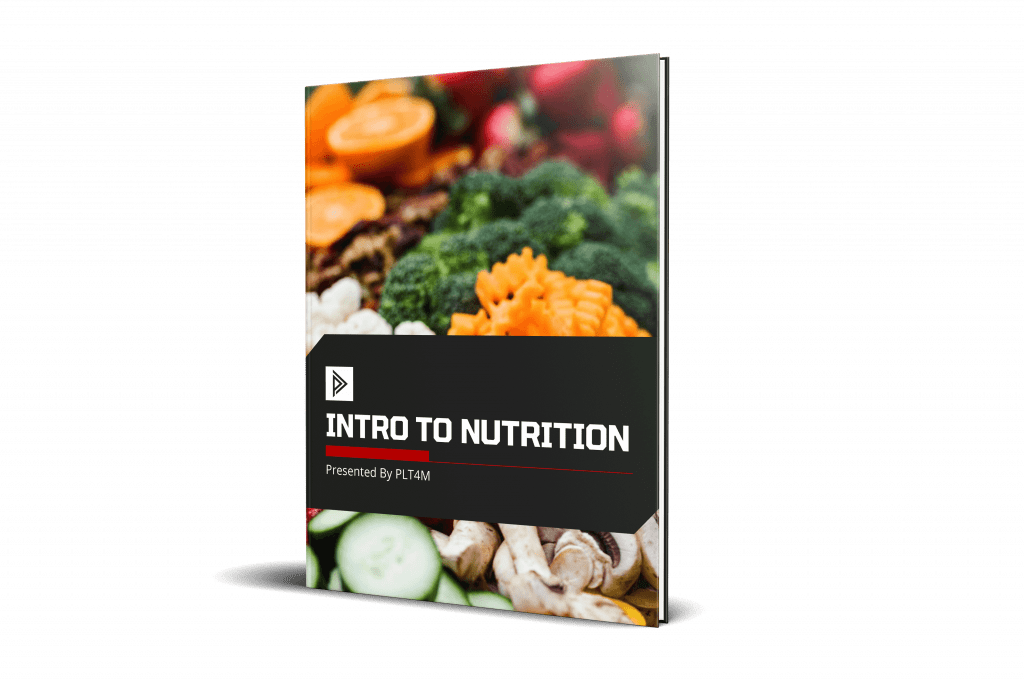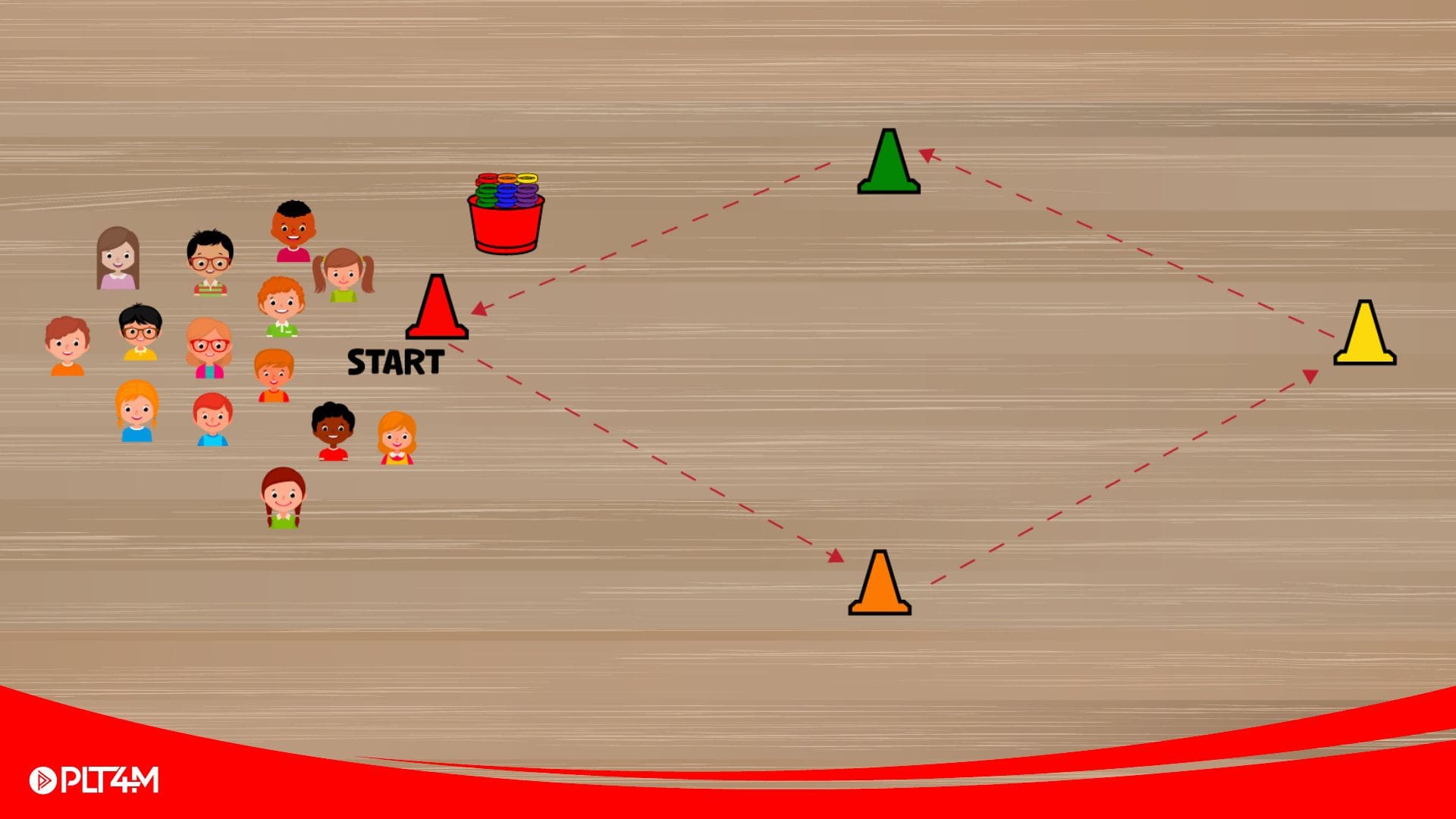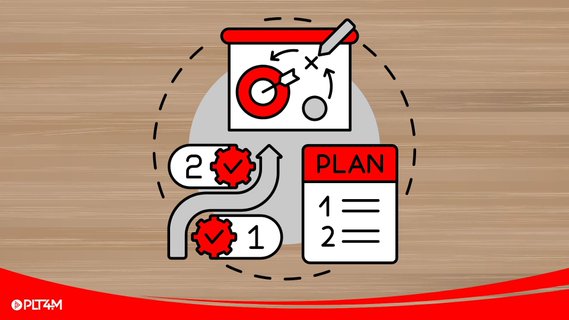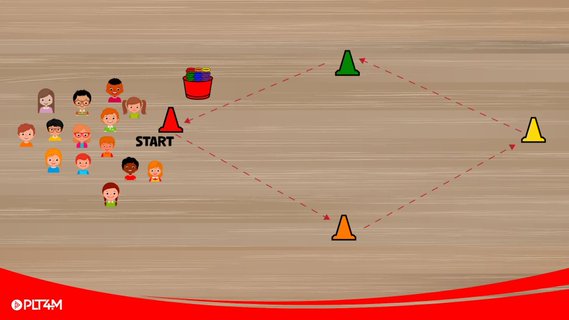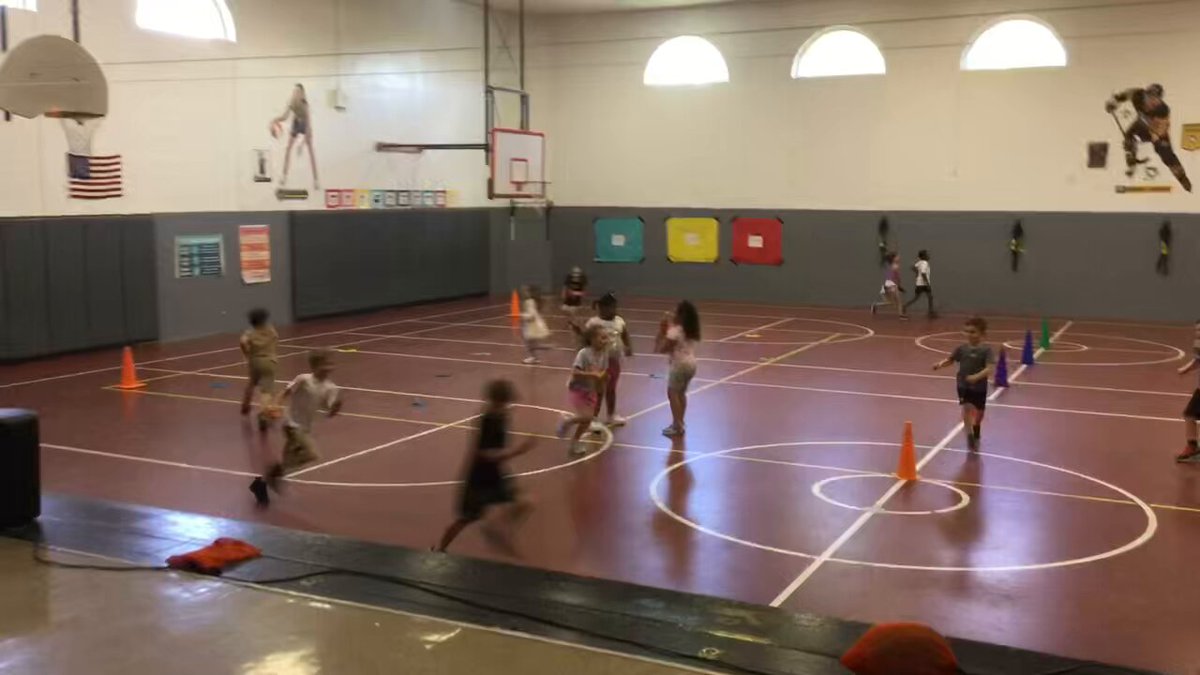Nutrition often draws headlines around obesity, chronic disease, and our national health. And while headlines come and go, how we empower students for lifelong wellness requires an immersive educational experience.
Teachers, administrators, families, and other key stakeholders can all come together around the importance of a nutrition education for students.
The importance of nutrition education in schools
We all eat! But, students don’t always get their information from high quality, reliable places. The importance of nutrition education in schools lies in the opportunity to empower students to make sustainable, well informed food choices. Not just for while they are young people in a school environment, but so that they are equipped with the tools to succeed for the rest of their lives.
In talking about nutrition we often label things as good or bad, right or wrong, but a robust nutrition education sets students up to navigate the real-world and all of the different nuances that come with fueling our bodies.
The benefits of nutrition education in schools
Every student and adult has their own eating behaviors that make them unique. Those behaviors are impacted by their environment and experiences, as well as the information they receive. Through a well-developed nutrition education program, an individual is able to make food choices to better support their overall health outcomes.
Nutrition education programs are not just about short term outcomes but instead about helping students establish a healthy relationship with food that supports them for the rest of their life. It starts with building a foundation.
But how to teach nutrition to kids? Let’s unpack that!
When to start talking about nutrients with students
In teaching students about nutrition, it is important to understand your audience and age of your group. Exploring nutrition looks different depending on the student’s developmental and psychological readiness.
Elementary School
For example, while elementary school-aged children might be able to memorize and recite information about nutrients, they are not yet ready or able to apply that information. Abstract concepts like chemistry are not developmentally appropriate. They are better served by expanding their food worlds with interactive experiences that increase their confidence and knowledge of where foods come from and how they can interact with those foods.
Middle School & High School
As they get to middle school, students can begin to understand abstract concepts such as health and chemistry. But it really isn’t until high school that they can truly grasp content around nutrients. But even then, most adolescents are not able to practice food choice – they are dependent on parents/guardians and school systems to provide for them.
There is great value in understanding food from a chemical perspective. It helps students understand the value and impact of all foods. It also allows for greater flexibility and creativity. However both micronutrients and macronutrients are often misunderstood due to mislabeling.
For example, it’s common in popular culture to label different food groups as nutrients. Some might use the words “grains” and “carbs” interchangeably. And while grains do have the chemistry of carbohydrate, there are many other foods, including fruits, vegetables, and milk products that also have carbohydrate! Out of context, even looking at the u.s. department of agriculture (usda) food groups chart can cause some confusion on what an actual nutrient is.
Simply put, a nutrient is really the chemistry of any type of food. And each different type of carbohydrate, protein, fat, or micronutrient comes with a specific chemical makeup.
Avoidable pitfalls in nutrition education for kids
Aside from setting a foundation, we must be mindful of the context in which we are teaching nutrition. Health goals that come at the expense of, (and do not consider), social, emotional, and financial health are limited and short lasting. We often use buzzwords that look to link “healthy” with “good.”
- Healthy Diet
- Healthy Meals
- Healthy Food Choices
- Healthy Eating Habits
So if healthy (insert word) is therefore good nutrition, it leads to the false impression that if a food isn’t “healthy” then it’s “bad” or “harmful.” And that’s just not true.
Nutrition research, guidelines, and approaches have their place and value. However, it is important to keep in mind that even if there is an ‘answer’ in the literature, if it is not in line with a human’s condition, it’s not a solution.
This is where a nutrition education that is centered around the students overall well-being is crucial.
A lack of nutrition education in schools?
As school districts spend more and more time looking to teach to the state and national standards, nutrition education has not often been a focus throughout the school year.
While many school meals programs do provide additional resources as part of their services, it is not year round like many other subject areas are able to provide. Rather, students will see posters or different passive educational resources at school breakfast and lunch in the cafeteria.
But what about throughout the school day as part of the curriculum in health education or physical education? Many schools avoid incorporating nutrition education programs because of the lack of educational hours and resources available.
The involvement of school nutrition education programs from external companies
Now more than ever, companies are looking to provide high quality nutrition knowledge so that school districts can develop nutrition education programs.
As more groups look to address the public health of our students and adults, pairing different physical activity education and overall health education is becoming more prevalent.
Companies like PLT4M, have brought on nutrition experts to develop curriculum and resources that are engaging and appropriate for students. The goal is to create age-appropriate resources that help students and teachers navigate the vast ‘gray area’ of food and nutrition.
How nutrition in schools (& at home) should look
Alright, so here is the section that should have the magic answer to good nutrition, right? We wish it could be that easy.
But regardless of the health outcomes we want for ourselves or others, the guiding values typically look something like this:
- Fuel the body properly and regularly
- Move the body and pair with balanced rest
- Support mental and emotional health
To achieve this, there are some basic questions we can help foster and develop within our students. When you look at a food, what is it providing? And how do I get not only the nutrients I need but also the taste, textures, and flavor I enjoy?
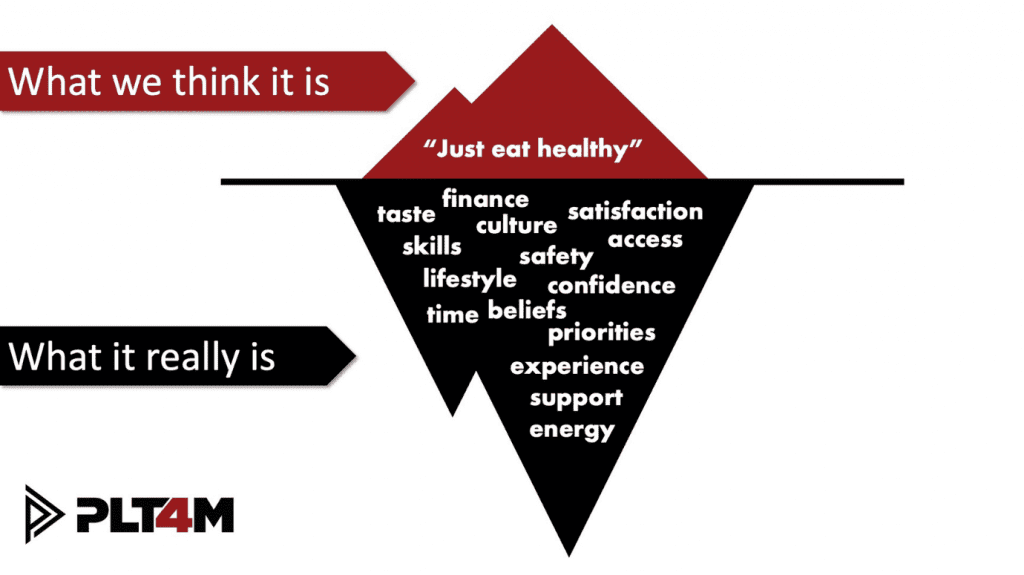
What can be done to improve nutritional education for children?
Nutrition education should be approached differently for each age group based upon their cognitive and emotional development. Nutrition education in schools is only as good as the plan put in place at different developmental stages. Let’s take a look at the different levels and what to consider.
Start with nutrition activities for toddlers
For early childhood nutrition education and children between the ages of 2-7, they learn best in immersive experiences where they can interact with foods. This age group learns best by imitating, investigating, asking questions, comparing and classifying the things around them. It is ideal to keep the food experience neutral – to help them find a healthy appreciation and curiosity for all foods and flavors without any limits on the experience.
Example activities include:
- Use senses to explore foods
- Identify and name foods
- Read books about food and food experiences
- Explore cultural diversity around food
- Engage in simple food preparation (eg, watch, pour, stir)
- Classify simple patterns (eg, shape of foods, colors of foods) one concept at a time
- Match pictures of food to food in real life
It might be tempting to begin to label foods “good / bad” or “healthy / unhealthy.” But these labels don’t often change behaviors. Instead, because of where they are at in their emotional development, these messages often translate that they are a “bad” person if they eat “bad” food.
Improving nutrition education in elementary schools
As children move into elementary school around age 7-11, they are able to demonstrate logical and systematic manipulation of symbols (eg, food groups) related to concrete objects (eg, foods). They are beginning to grasp some abstract concepts. And as their operational thinking develops, their egocentric thought diminishes.
Teaching nutrition to elementary students is still not the same as high schoolers, but most students are ready to move beyond the simple immersive activities of preschool. At this age, it’s appropriate to:
- Explore where a food comes from
- Explore how a food can be prepared multiple ways
- Simple recipes
- Increase engagement in food preparation process (eg, pour, stir, cut)
- Emphasize body diversity / value
- Emphasize ability diversity / value
It’s particularly important in this age group to avoid food / body / ability comparisons and shaming as emotionally, this is when children begin to establish their worth relative to how they feel they fit into the world around them. It’s important at this age to find ways to improve and enhance individual confidence and empowerment.
Nutrition resources for elementary school teachers
Improving nutrition for middle schoolers
Nutrition for middle school students begins to look closer to what we formally teach adults and high school students. This is the age where students begin the transition to formal operations. They begin to learn by logical use of symbols (eg, food groups) related to abstract concepts (eg, chemistry / biology). This age group is ready to expand on their nutrition foundation to….
- Learn which foods go in which food group and why
- Understand how to pair food / food groups to create satisfying meals
- Learn nutrients that come from various foods
- Avoid food / body comparisons
Improving nutrition for high school students
Teaching nutrition to high school students can be more formalized as this age group has an increased ability to apply abstract concepts like nutrients and health. This age group is more ready to explore …
- Food chemistries like macronutrients and micronutrients
- Impact of food on future physical and mental health
- Impact of movement on physical and mental health health
However, it’s important to recognize that while they are more likely to understand these abstract concepts, their critical thinking ability is not fully developed. They may not fully understand and appreciate the consequences of their current actions on the future. This in combination with social pressure around conformity as well as the rapid physical and hormonal changes that make it challenging for this age group to approach food and nutrition in a healthy way. Instead, information is easily mis-interpreted to eat and exercise in a way that enhances their appearance and/or social / moral standing.
It’s also important to recognize that this age often marks the beginning of increased food independence. As students spend less time with their parents and possibly have some money, they are able to purchase food without the supporting guidance of their parents. However, these food choices can also be impacted by their social groups as well as perceived previous deprivation.
This makes it even more important for educators to avoid making nutrition education about appearance or social worth. By focusing on nutrients as is done in PLT4M, it takes some of the power away from foods and gives a shared language to talk about the “gray” area of nutrition – to appreciate that all foods have purpose and function. It’s also a powerful time to begin to ask students to reflect on their personal experience with food – to begin to develop (or further enhance) the ability to choose foods based on how they serve them vs what someone else tells them to do. This sets them up for continued future success.
Nutrition resources for middle & high school teachers & parents
- Nutrition Lesson Plans For High School
- Weight Vs Health In Nutrition Education
- Supporting your Your Students Nutritional Journey
Key Takeaways: Teaching Kids About Healthy Eating
Like anything in schools, it takes a village. Think of it as ‘team nutrition’. Academic performance, physical activity, and healthy choices are all interconnected in our student’s lives. How we go about incorporating nutrition education is another piece of the larger academic puzzle we must all figure out together.
It takes a team to tackle any topic or challenge, nutrition is no different. Let’s do it together!
Other resources for nutrition education
- Nourishing Bits & Bites
- Health.Gov Dietary Guidelines
- USDA Teen Nutrition
- NIH Nutrient Recommendations
Free Download
Intro To Nutrition E-Book
This E-book comes fully loaded with written and video lessons covering calories, carbohydrates, proteins, and fats.

